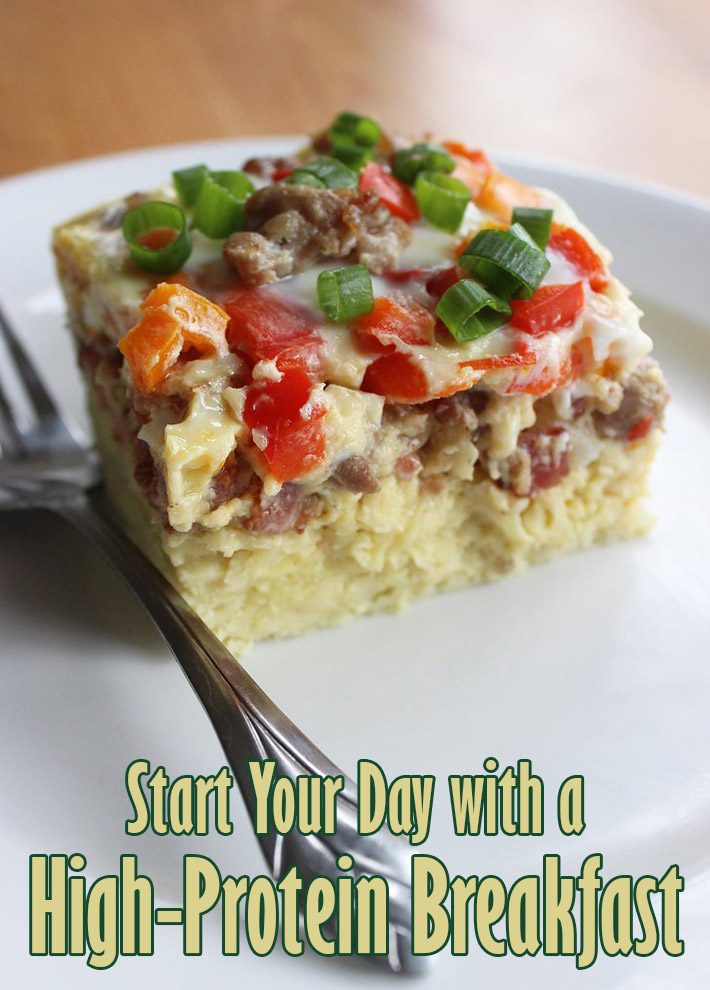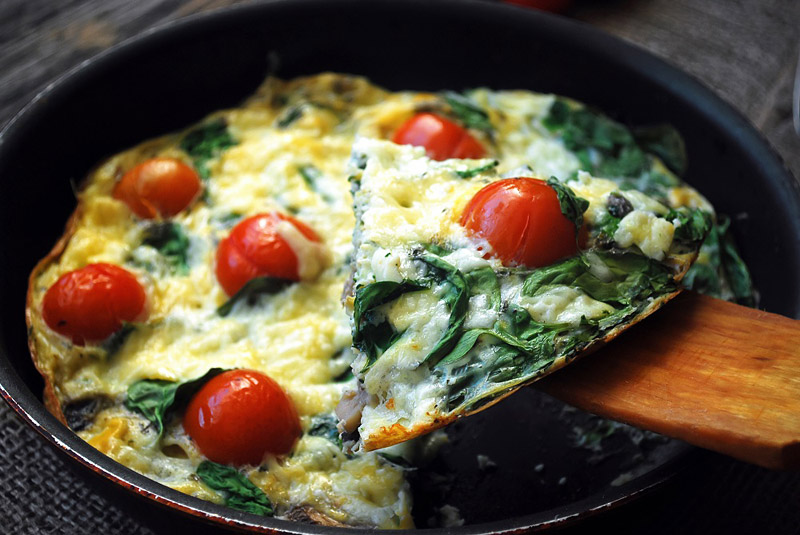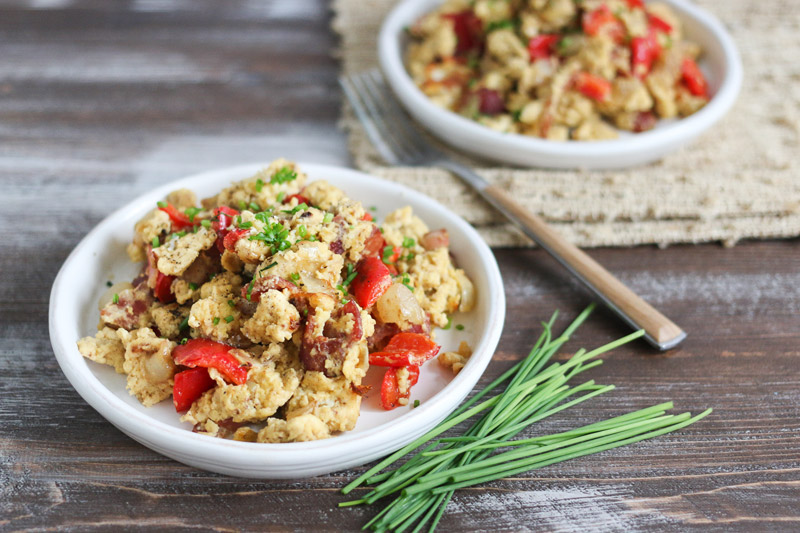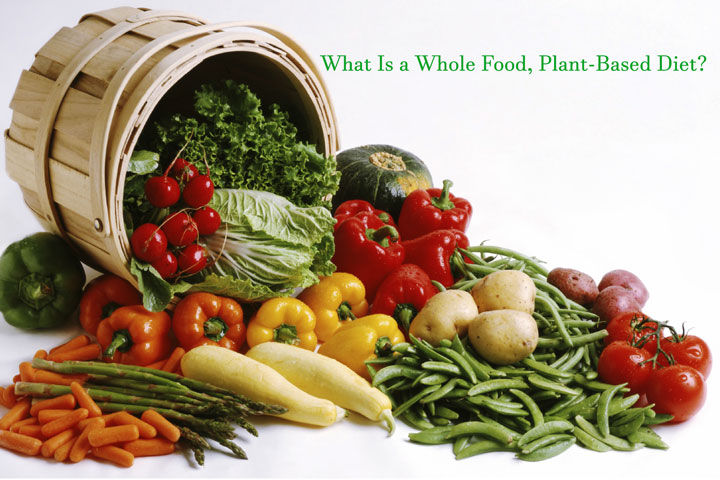
Start Your Day with a High-Protein Breakfast
You’ve heard the phrase “you can’t out-train a bad diet,” right? How about “abs are made in the kitchen, not in the gym”? For better or worse, diet and exercise go hand-in-hand, and as a personal trainer, I’m always trying to figure out the right balance for myself as well as those who come to me for advice, looking for answers to the most common questions surrounding protein:
How much do we need? What are the best food sources for it and what’s the right ratio of protein, fats, and carbohydrates? Should I be eating a high-protein breakfast? What about carbs in the morning – are they bad?
Now, some quick facts:
- Protein is considered a “building block” for bones, muscles, blood, hormones, vitamins, and more.
- Protein can be found in both animal and plant sources.
- There are complete proteins – meaning that they supply all the essential amino acids in an appropriate ratio – and there are incomplete proteins, which are lacking in one or more essential amino acid. You can combine some incomplete proteins to get a complete protein (peanut butter on whole wheat bread; oatmeal with milk).
- Examples of complete proteins: whole egg, milk/milk products, animal products.
- Examples of incomplete proteins: grains, legumes, nuts, seeds, and other vegetables.
- Generally, protein is more satiating than fat or carbs, meaning it can make you feel full faster and for longer.
- Endurance athletes typically need more protein than sedentary adults, but a high-protein diet that goes too far above the recommended daily totals can lead to health problems, including heart disease and cancer.
Together with fats and carbs (as well as water), your body is able to work, and work efficiently. But it can be hard to figure out, as the USDA revealed in its 2015-2020 Dietary Guidelines snapshot, finding:
- About three-fourths of the population have an eating pattern that is low in fruit, vegetables, dairy, and oils.
- More than half of the population meet or exceed total grain and total protein foods intake, but would benefit from increasing the variety of foods consumed within these food groups to improve nutrient intake and adequacy.
- Most Americans exceed the recommendations for added sugars, saturated fats, and sodium.
- Most Americans are consuming too many calories.
What should we eat, and when?

I asked a few RD friends to weigh in.
“There has been so much research released over the last several years about the importance of protein distribution throughout the day,” says Lauren Harris-Pincus, MS, RDN, and owner of www.NutritionStarringYOU.com.
“Since we as humans can only utilize about 25 to 35 grams – about 4 to 5 ounces – of protein per meal to use for muscle synthesis and repair, it’s critical to consume an adequate amount at breakfast. You can’t simply have an 8-ounce steak for dinner and make up for the fruit/juice-based smoothie or bagel you ate for breakfast. Since we lose muscle mass as we age, this is especially important for those of us 40-somethings who are starting to see a slowdown in metabolism. I always prefer to pair protein with healthy carbs like whole grain oats and fruit.”
So, should we be swapping out our carb-heavy breakfasts for protein bars or big plates of meat? Not necessarily, says Anne Mauney, MPH, RD – a dietitian and blogger at fANNEtasticfood.com.
“I don’t think avoiding carbs in the morning is a good thing (you’ll just crave them later), but a mistake I see a lot of clients making is to JUST have carbs in the morning. Without protein and fat to add staying power to the meal, you’ll be hungry again in hours. Plus, having carbs by themselves isn’t great for blood sugar, either.”
Jennifer Pullman, MA, RDN, LDN, is a registered dietitian with over 13 years of experience who blogs at nourishedsimply.com. She agrees that for athletes, in particular, protein can work in combination with carbs:
“In the case of people who are exercising and weight training, we need protein of course to build and repair muscle, but we also need carbs to fuel muscle,” she says. “Carbs are the body’s preferred fuel source. To use protein as fuel we have to break down muscle tissue, which is counter productive. Breakfast is the first meal of the day and we are coming off sleeping for about 8 hours and possibly not eating for 8+ hours. We have used whatever fuel we had stored during that fasting period.”

So, what does she eat for breakfast?
“I love eggs with veggies and a side of fruit or whole grain toast; peanut butter on whole grain bread; yogurt and fruit.”
So, what’s the takeaway?

- Protein in the right amounts can fuel your healthy lifestyle, giving you energy and the building blocks for muscle.
- Experts recommend eating protein throughout the day rather than just trying to get the recommended amounts in one meal, like breakfast.
- Pairing protein sources with healthy carbs can help you feel and stay full while giving your body the right balance of fuel.
- It’s as important to choose high-quality, lean protein as it is to get a specific amount. A variety of meat, poultry, seafood, beans and peas, eggs, processed soy products, nuts, and seeds can help round out your healthy diet.




Leave a Reply